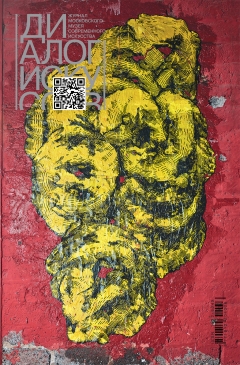Il’dar Yakubov: So as far as everyone is so much interested in the future tendencies and trends I would like to ask about like where the tendencies and trends actually come from because especially in such fields as art and science you need a lot of institutional support—materials technology gear and there is always some other
site that has some interests that somehow divert or are different from yours so in order to execute some complex project that involves the labs technology and stuff. And you have to take a ride of a wave of academic, corporate and other entities interests?
Joe Davis: What I think though that's changing a lot. As the D.I.Y. biology community the do it yourself biology community has changed that profoundly, people are buying mail ordered kits that allow them to operate state of the art technology and a good example is crispr technology which is publicly available. You can execute some really sophisticated projects in your garage. And to understand the level I can mention that some of the D. I. Y. community biological research have come up with new tools that are now useful to the whole world of science and is used in labs worldwide—new fluorescent proteins for example. Yes institutional support is certainly helpful but it's not prerequisite.
IY: And what's the future trend as technology becomes more and more available?
JD: You know there will be DNA sequencers on your cell phone. And the data handling capabilities of DNA are increasing at such an enormous rate. That this is... the Kind of technology that will replace the internet you know, in a way that the internet will go the way of photographic film in motion and a Newspapers... like you got a question it isn't on your cell phone, you just reach out and pick up a blade of grass.
IY: Special actuators move your hands, micro pumps dispense synthesized smells, special jackets inflate patterns of small chambers to make you feel touch and haptic gloves give your hands feedback from virtual objects. When virtual experiences finally give user so much sensory input at a resolution high enough to be indistinguishable from real—what would be your attitude?
JD: So the problem with virtual reality is that we haven't figured out what reality is in the first place we've been worrying about it for thousands of years and haven’t figured yet So this is little presumptive to say that we can created it artificially, if we don't understand what it is.
IY: But isn't creating artificial worlds is one of the fruitful ways to explore and understand what we call reality? Evolutionary algorithms could be an example of how designing and studying virtual systems brings to light some important insights for the general evolution research
JD: What is artificial reality. I mean I guess artificial reality could pose situations which include accidental events. I just don't know.... reality is the question. Because all reality exists in this tiny decimal moment that human beings are nev- er directly aware of, in the first place. It takes twenty two milliseconds for the brain to process what just happened. To that you have to add the lag time of physical sensorium—optical integration time and Various other integration times and various response times of the sensorium Members elements and since our own. Together. So. If the universe is a junction of the two time cones —one is memory and the other is prediction. We’re stuck somewhere in memory because we cant ever catch up with.




